We LOVE our native ferns. There is something so soothing about a colony of ferns – the texture, the form, the smell – they are an iconic symbol of forests of the Northeast. Ferns do not produce flowers—no nectar or pollen for pollinators—and their foliage does not provide much food for wildlife. However, colonies of ferns provide essential cover and nesting sites and nesting materials for wildlife. Ferns can also grow in inhospitable environments – deep shade, wet soils, and soils with extreme pHs – playing an important role in soil stabilization where not many other plants can succeed.
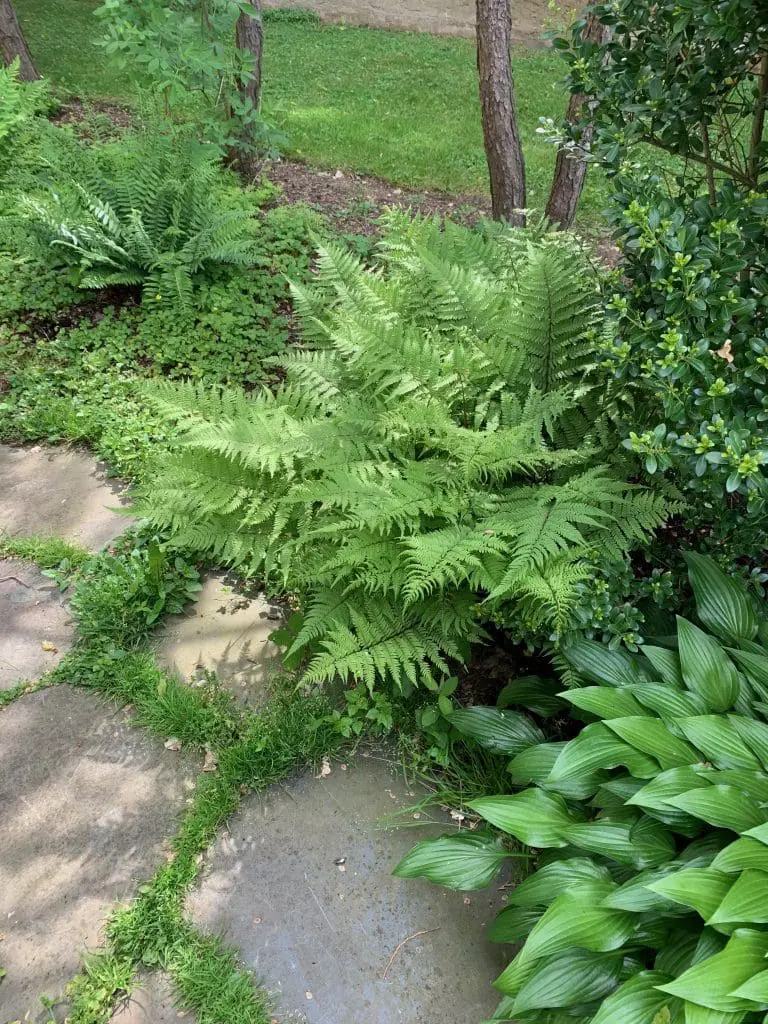
We consider native ferns essential to any shade garden or woodland garden — we feature native ferns in nearly all of our ecological landscape designs! Below we explore our favorite go-to ferns for landscape installations in the tri-state area.
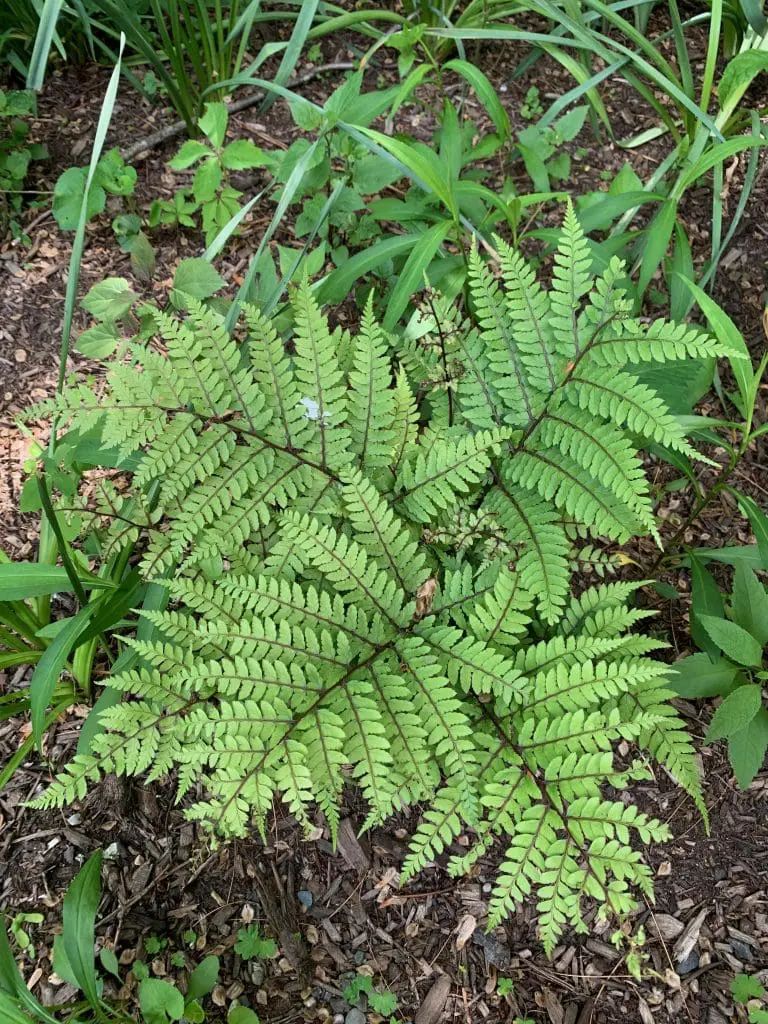
Lady Fern
Athyrium filix-femina
2-5’ Tall
Deciduous
Native to the continental US and Alaska, Lady Fern naturally grows in wet meadows, moist woodlands, and (less commonly) swamps. It is considered a pioneer or early succession species. In the mountainous parts of the country, Lady Fern fronds are a food source for Grizzly Bears and Elk. Distinguishable by the darker green to purple stems and delicate lacey foliage. Cultivar ‘Lady in Red’ has red stems and light green fronds.
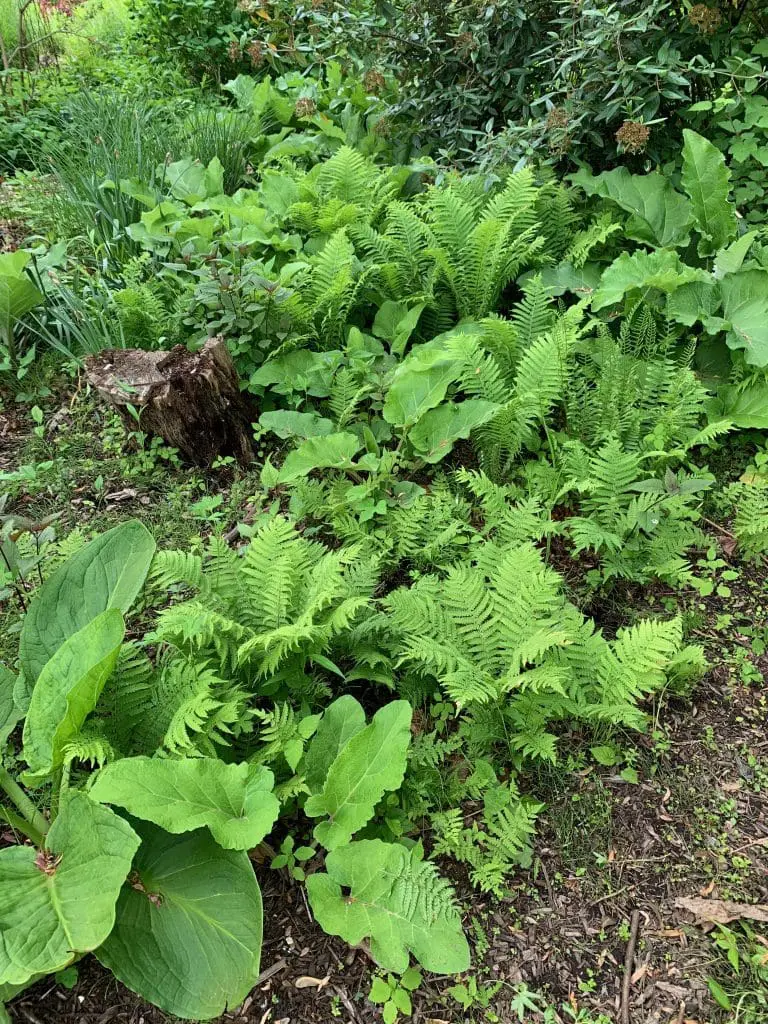
New York Fern
Thelypteris noveboracensis or Parathelypteris noveboracensis
1-2’ Tall
Deciduous
New York Fern can tolerate a range of habitats, from full sun to part shade, dry to wet soils (a facultative plant, great for rain gardens!). Naturally found in dappled sunlight in mixed forests, swamps and riverbanks.
Caterpillars that feed on New York Fern foliage include Pink-shaded Fern Moth, and American Angle Shades, Closebanded Yellowhorn Moth.
Distinguishable by its tapering fronds – instead of a triangular shape, NY Fern fronds are widest in the middle and tapered at both ends.
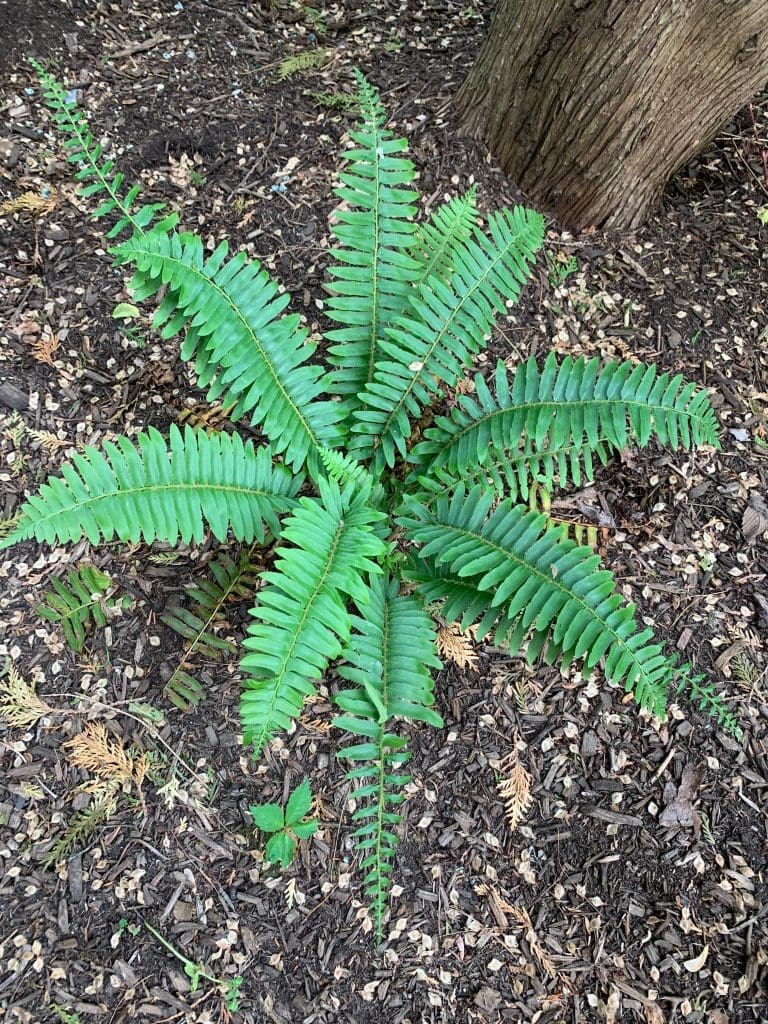
Christmas Fern
Polystichum acrostichoides
1-3’ Tall.
Evergreen!
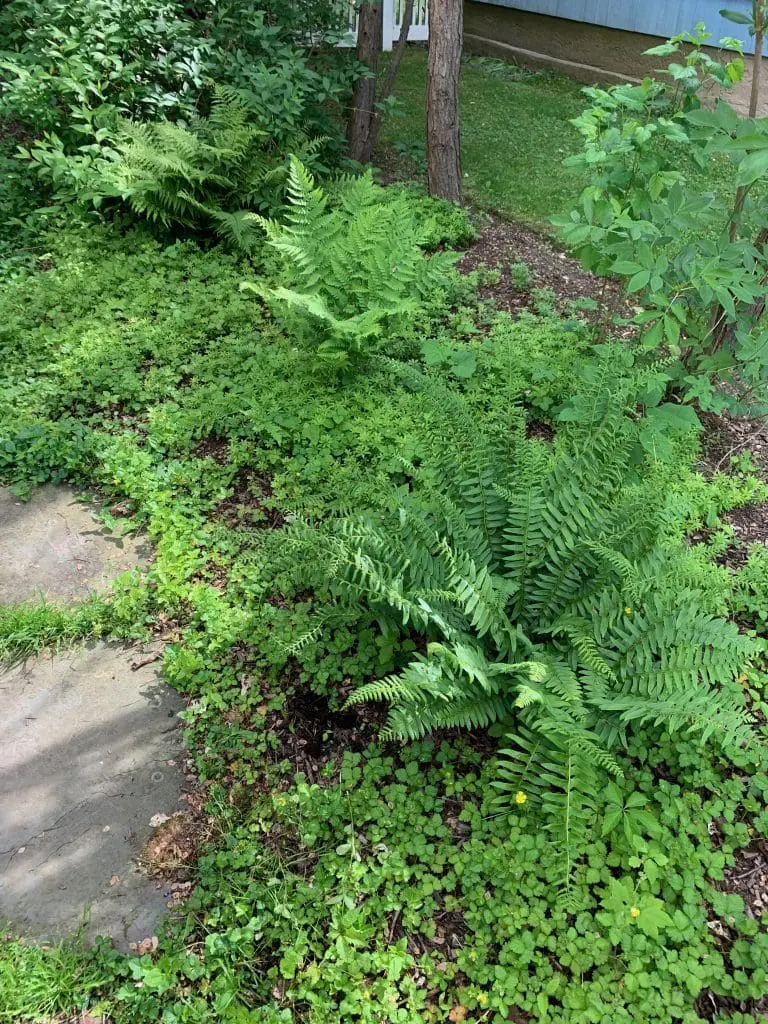
Distinguishable by its darker green, leathery foliage and stocking-shaped pinnae (leaflets). Fiddleheads that emerge in spring are silver. Can take dry to moist soils and does well in part shade to full shade. Grows in a clump, fountain-like shape.
Cinnamon Fern
Osmundastrum cinnamomeum
2-3’ Tall. Up to 5’ tall in ideal conditions!
Deciduous
Cinnamon fern is distinguished by its central, cinnamon-colored spikes – new fronds that quickly turn brown. These fibers are actually used to pot orchids! Plus, the fiddleheads of Cinnamon Fern are edible! Average to wet soils; rich in organic matter is best. Part shade to Full Shade. In the winter, fronds are eaten by ruffed grouse and wild turkeys.
Maiden Hair Fern
Adiantum pedatum
1 – 1.5’ Tall
Deciduous
Maiden Hair Fern has uniquely wide, fan-shaped and scalloped leaflets. Stems are wiry and thin. Red fiddleheads. Native to Eastern & Central US. Grows well in part shade in rich moist soils.
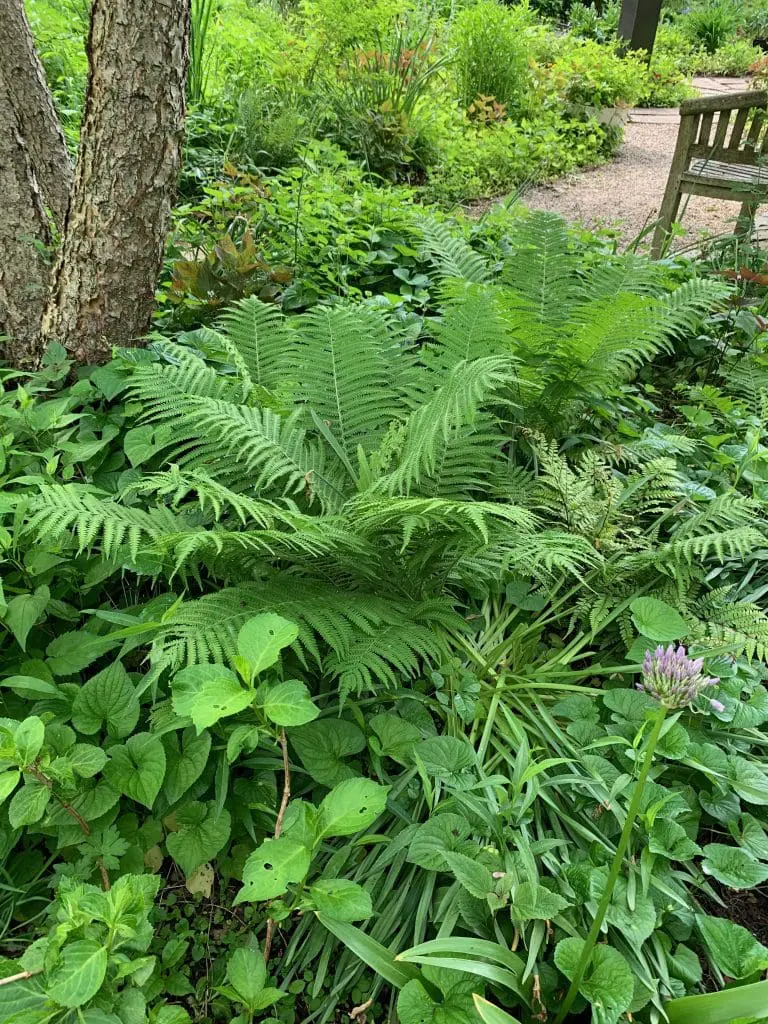
Marginal Wood Fern
Dryopteris marginalis
1-2’ Tall
Evergreen
Naturally grows on rock outcroppings in forests. Fronds are leathery in texture and grey-green in color. Grows best in slightly acidic, rich, moist soils in part shade to full shade. Often found in the understory of oak trees – genus name originates from the Greek word dryas meaning oak.
Royal Fern
Osmunda regalis
2-3’
Deciduous
Grows well in wet to medium soils. Part shade to full shade. Prefers slightly acidic, rich soil. Can reach up to 6’ tall in ideal growing conditions! Pinnae are large and well-separated. Brown clusters at the end of the fronds hold the spores. A great fern for stream edges, ponds, bogs, and wetlands.
Ostrich Fern
Matteuccia struthiopteris
3-6’
Deciduous
Naturally grows in moist soil along streams and riverbanks. Grows fast and colonizes quickly through rhizomes. Best in medium to wet soils, rich in organic matter, in part to full shade. Namesake comes from the large, feathery-textured fronds, not unlike those of an ostrich. The fiddleheads are edible and considered a delicacy!